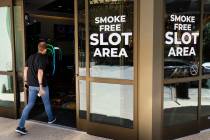Have your sleep studied: How one woman made $12K
Several million people in the United States regularly suffer through sleepless nights, which many researchers agree greatly affects overall health. Numerous hospitals dedicate entire divisions to studying sleep — and they’re willing to pay you several thousand dollars just to watch you nap.
Most studies want healthy adults with consistent sleep patterns. I checked both boxes, and earned $12,000 participating in two studies at Boston’s Brigham and Women’s hospital..
Here’s what I learned in the process, and how you, too, can get paid to sleep.
How to qualify to make money while you sleep
Some cities have a higher concentration of facilities that pay sleep-study participants, but it’s easy to find facilities in your area.
When you find a sleep center near you, you’ll usually see multiple studies running simultaneously. You won’t qualify for all of them, but you may qualify for more than you think.
Read the specifics of each study carefully so you only apply to ones you qualify for. You’ll often need to take a survey, sharing your personal information and confirming you understand the study’s goals and compensation. For example, the questionnaires I filled out included:
An age window: Most studies look for volunteers in a specific age range.
Length of in-hospital time: Whether it’s a few hours or several nights, make sure you know what you’re signing up for.
Payment: You’ll want to make sure a study is worth your time and effort before joining.
Specific lifestyle or medical requirements for study: Some studies look for volunteers with specific needs or qualifications, such as people with sleep apnea or those who work shifts outside the traditional 9-to-5.
Comfort with the study methods: Recruiters want to make sure you’re up for the challenge. While the questionnaire won’t tell you everything about the study to make sure you don’t tailor your answers to what you think the recruiters want to hear, they want you to know what they’re aiming to observe.
Don’t fudge your answers. Being honest is the only way to successfully get through this process — and to contribute to the collection of accurate scientific data!
What happens after you’re accepted to a sleep study
Once you’re accepted, you’ll find you have just become the recruiter’s best friend! She’ll want to talk to you and see you all the time.
Next, you’ll go to the hospital for a series of briefings and tests. You’ll likely meet the doctor conducting the research, who will give you a thorough explanation of the study and its processes.
At this point, you’ll likely take two exams:
A psychological exam: The goal is to make sure you can handle isolation and a hospital environment in general.
A physical exam: Like a standard physical, a nurse will weigh you, take a small blood sample, ask you to pee in a cup, etc.
The best part? This is paid time. If you get cold feet and decide to quit at this point, you’ll still make money for the parts of the process you completed.
Compensation varies, but most researchers want to dangle a carrot so you’ll keep going. Most of the time you can expect a $25-$100 payment for each step you complete.
Most facilities are really good about explaining the payout, but if yours doesn’t explain it at the beginning, ask. This is also your opportunity to discuss when and how you’ll be paid, as well as how your payment will be taxed.
After your exams, you’ll meet the recruiter who you will call every day for the duration of the study. At this point, I actually stopped calling her my BFF and started calling her “my mother.” She gave me a special watch to monitor my light and activity patterns, keeping an eye on what I was doing.
You’ll also keep a physical sleep log documenting your progress as you wake up and go to bed at the same time every day. To help ensure accuracy, you’ll call your new “mom” as you’re doing this.
That said, Mom has faith in you. She wants you to succeed, and if you blow curfew a few nights, you probably won’t be kicked out of the study.
What to expect when you’re… sleeping
No, it’s not all comfy pillows and sweet dreams; researchers pay participants because these studies have a few downsides.
In my experience, they sound worse than they actually are. Here’s what you should be ready for:
Isolation
You will likely be completely cut off from the outside world during the study’s observation period. You usually won’t have any time cues, meaning you’ll be without a clock, a computer and a phone. You also won’t have any windows to observe light patterns. While you’re in the study, the doctor determines night and day, which can be a bit unsettling.
I’ve taken part in studies as short as four days (for which I earned $4,000) and have seen others as long as 31 days (typically paying $10,000). Start small and work your way up once you’ve tried it once or twice.
Unusual positions or challenges
You may have to maintain a “constant posture” for part of the study. In some cases you may have to sit in the same position for six hours, or you may be kept awake at a 45-degree angle in low light for two days. It depends on the study. Be sure you’ll be able to manage it before you sign up.
And no, I’m not kidding about the “constant” part — you don’t get to get up or change positions to use the restroom, so you might need to use a bedpan. That was the most difficult part of the studies I did!
Needles and other medical devices
During at least part of the study you may have to endure an IV, a rectal thermometer and electrodes attached to your head.
Did you just say rectal thermometer?! Why yes, I did. There’s a reason these studies pay the big bucks.
The technicians and researchers make all of these procedures and measurements as easy as possible. The thermometer helps them make sure you’re maintaining a normal body temperature, and it’s not as big of a deal as it sounds.
Rewards of participating in sleep studies
No, it’s not all easy — but the rewards are great. I earned $4,000 for a four-day study and $8,000 for a seven-day study.
Plus, when you’re not giving blood or following instructions, you can do pretty much whatever you want outside of activities that would raise your heart rate.
If you want to relax, simply hang out in your comfiest clothes and listen to music, write letters, draw or paint. I finished several books that had been collecting dust on my shelves.
Or, put your time to work. A technician told me another participant worked on his architecture senior thesis during his time in the study!
You’ll enjoy a complete technology cleanse, you’ll interact with interesting technicians and researchers, you’re contributing to science, and best of all, you’ll get a big fat check. Not bad for a few nights’ work!
Jillian Shea is a contributor to The Penny Hoarder.
This was originally published on The Penny Hoarder, a personal finance website that empowers millions of readers nationwide to make smart decisions with their money through actionable and inspirational advice, and resources about how to make, save and manage money.






















